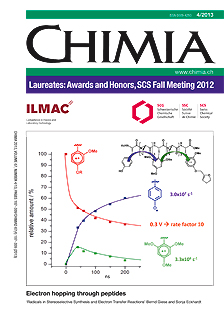Extracting Information about Chemical Bonding from Molecular Electron Densities via Single Exponential Decay Detector (SEDD)
DOI:
https://doi.org/10.2533/chimia.2013.253Keywords:
Aromaticity, Bonding, Conceptual dft, Electron density, Electron localizationAbstract
The recently introduced molecular descriptor (Single Exponential Decay Detector - SEDD) [P. de Silva, J. Korchowiec, T. A. Wesolowski, ChemPhysChem 2012, 13, 3462] is used to visualize bonding patterns in molecules. In each point of space SEDD is simply related to the electron density: SEDD(r) = ln[1/?2(?(??/?)2)2]. Either experimental or computed densities ?(r) can be used to evaluate SEDD. Here, maps of SEDD are obtained from theoretical densities and reveal such features as core electrons, chemical bonds, lone pairs and delocalization in aromatic systems. It is shown that SEDD provides fingerprints of aromaticity, which can be separated into geometric and electronic effects.Downloads
Published
2013-04-24
Issue
Section
Scientific Articles
License
Copyright (c) 2013 Swiss Chemical Society

This work is licensed under a Creative Commons Attribution-NonCommercial 4.0 International License.
How to Cite
[1]
P. de Silva, J. Korchowiec, N. Ram J. S., T. A. Wesolowski, Chimia 2013, 67, 253, DOI: 10.2533/chimia.2013.253.







